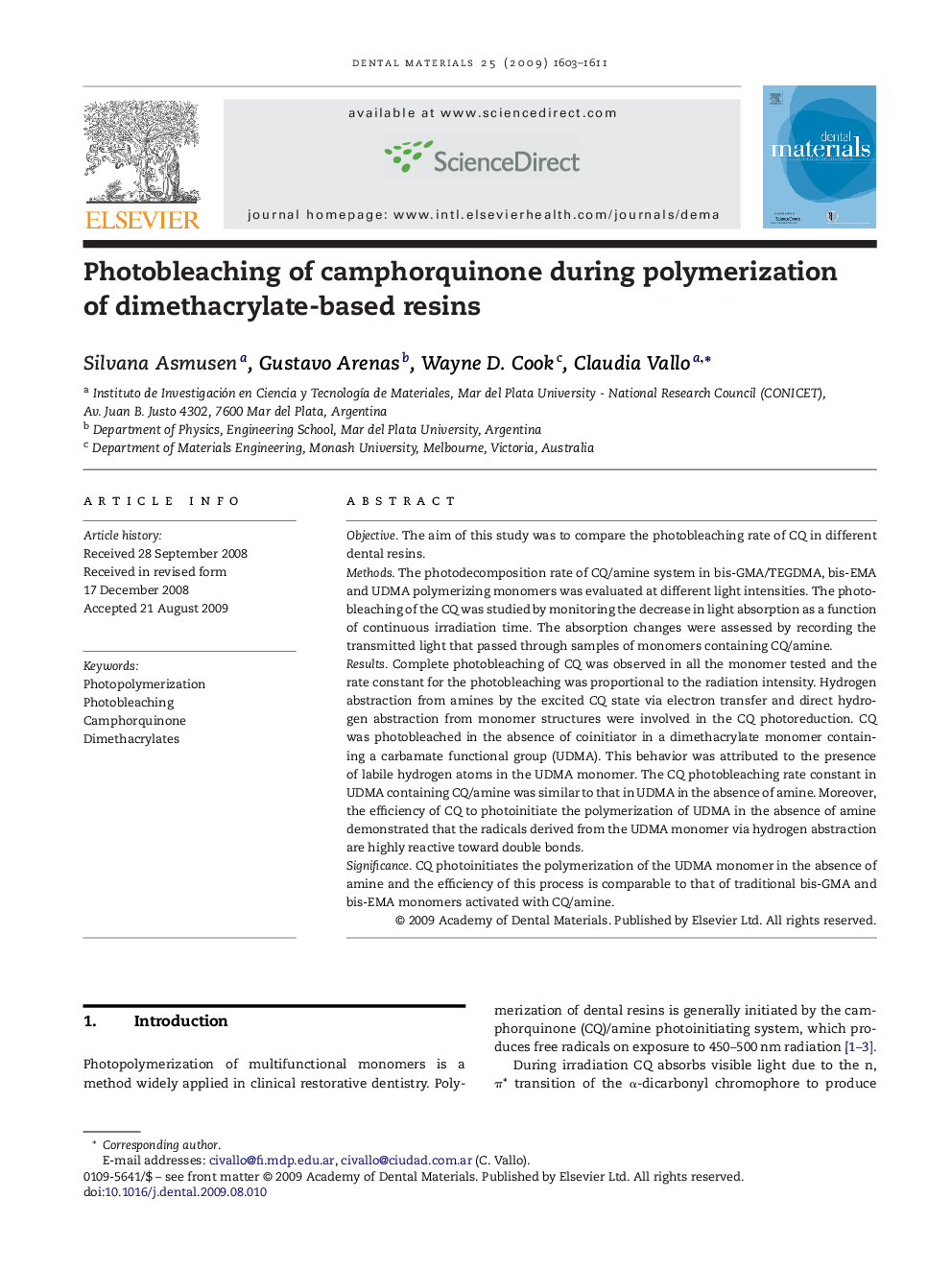| Article ID | Journal | Published Year | Pages | File Type |
|---|---|---|---|---|
| 1421972 | Dental Materials | 2009 | 9 Pages |
ObjectiveThe aim of this study was to compare the photobleaching rate of CQ in different dental resins.MethodsThe photodecomposition rate of CQ/amine system in bis-GMA/TEGDMA, bis-EMA and UDMA polymerizing monomers was evaluated at different light intensities. The photobleaching of the CQ was studied by monitoring the decrease in light absorption as a function of continuous irradiation time. The absorption changes were assessed by recording the transmitted light that passed through samples of monomers containing CQ/amine.ResultsComplete photobleaching of CQ was observed in all the monomer tested and the rate constant for the photobleaching was proportional to the radiation intensity. Hydrogen abstraction from amines by the excited CQ state via electron transfer and direct hydrogen abstraction from monomer structures were involved in the CQ photoreduction. CQ was photobleached in the absence of coinitiator in a dimethacrylate monomer containing a carbamate functional group (UDMA). This behavior was attributed to the presence of labile hydrogen atoms in the UDMA monomer. The CQ photobleaching rate constant in UDMA containing CQ/amine was similar to that in UDMA in the absence of amine. Moreover, the efficiency of CQ to photoinitiate the polymerization of UDMA in the absence of amine demonstrated that the radicals derived from the UDMA monomer via hydrogen abstraction are highly reactive toward double bonds.SignificanceCQ photoinitiates the polymerization of the UDMA monomer in the absence of amine and the efficiency of this process is comparable to that of traditional bis-GMA and bis-EMA monomers activated with CQ/amine.
